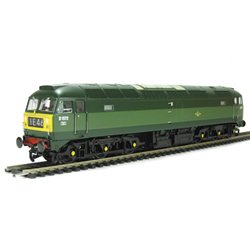There are a number of different options for attaching figures such as a horse and rider to a layout. Perhaps the...
No products
Product successfully added to your shopping cart
There are 0 items in your cart. There is 1 item in your cart.
Search Tips
What is Route Availability?
The route availability of a real-life locomotive is another way of saying which tracks an engine is permitted to travel along.
A lot of the British railway network dates back to the Victorian era. During that time there were many private companies building lines up and down the country, and the need to see a return on their investment led to lines being built to a standard good enough for that particular route, but to over-engineer a line would be seen as an unacceptable waste of money, this meant that the tracks (particularly on branch lines) would not support heavier or faster trains than was needed.
Fast forward half a century and the railways are now all one, and the newly formed British Railways, potentially, could send any train, anywhere, at any time. This of course would be catastrophic if a train that was too heavy was to venture onto a track with weak bridges. So every track in Great Britain was assessed and the tolerances of each route graded with a number between 1 and 10. Likewise, engines and rolling stock were assessed too and allocated a route availability number. This simple method allowed allocators to be confident of which engines could operate over which tracks and the system was so successful that it's still used to this day.
Click here to receive the tips weekly in your mailbox. You can unsubscribe at any time.










